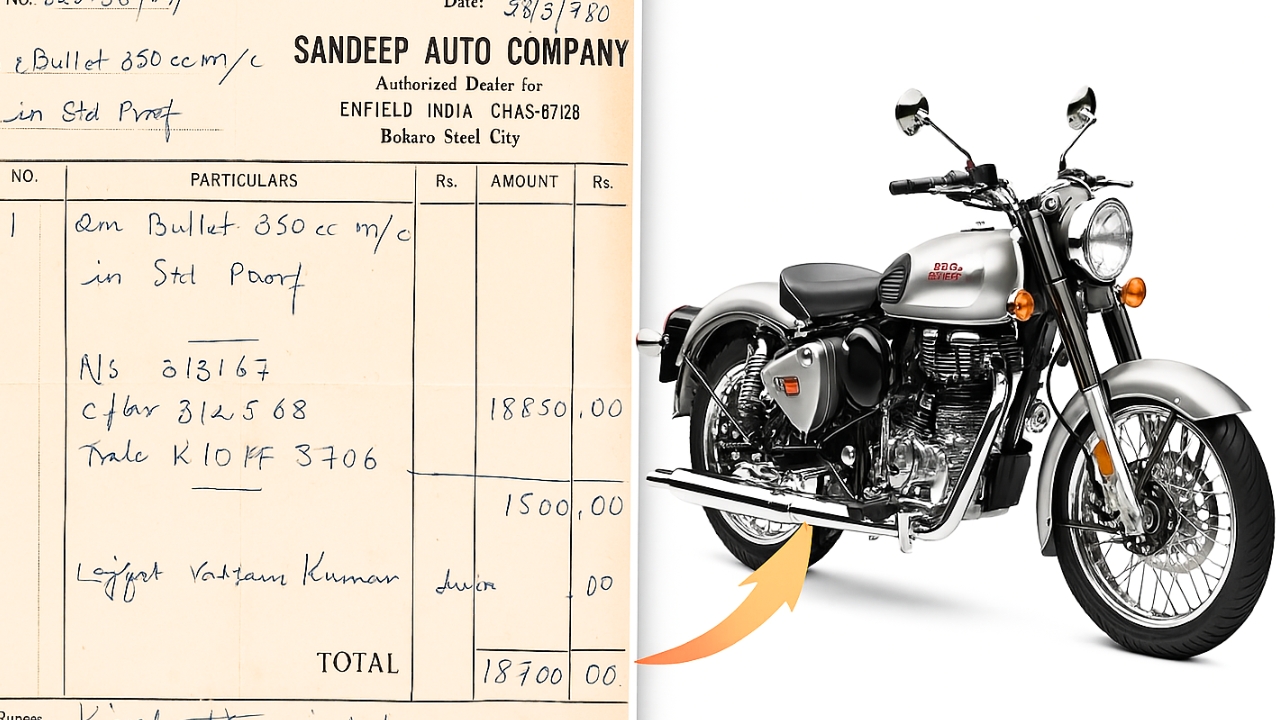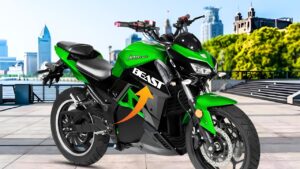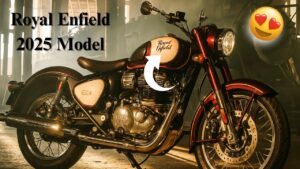In today’s world, buying a motorcycle like Royal Enfield is a big financial decision. With prices soaring past ₹2 lakh for most models, it’s hard to imagine a time when these iconic machines were considered extremely affordable. But what if you were told that back in 1980, owning a brand-new Royal Enfield would cost less than what you might spend today on a smartphone? Yes, it’s true.
The pricing of Royal Enfield motorcycles in the 1980s will leave most people stunned. It’s more than just a number—it’s a window into how far the Indian two-wheeler industry has come. Let’s take you on a nostalgic journey, revisiting the shocking price list of Royal Enfield bikes from 1980 and comparing it with today’s rates. This article isn’t just about money—it’s about how value, brand perception, and technology have evolved over four decades.
How Much Did a Royal Enfield Cost in 1980?
In 1980, the most famous Royal Enfield model was the Bullet 350. It was considered a macho, heavy-duty motorcycle that attracted both military riders and long-distance adventurers. But the biggest shock is the price.
The Royal Enfield Bullet 350 in 1980 was priced at just ₹8,000 to ₹9,500, depending on the city and dealership. That’s less than the price of an iPhone today or even a month’s rent in a metro city. To understand the gravity of this, consider the current Bullet 350 now starts at ₹1.73 lakh (ex-showroom) in India. That’s an increase of over 1,800% over the past 45 years.
Other models like the Royal Enfield Crusader or early versions of the Enfield Mini Bullet were available for even less—around ₹7,500. At that time, these bikes were not seen as luxury items but rather rugged, everyday transportation for middle-class Indian households.
Why Were Bikes So Cheap Back Then?
There are several reasons why motorcycles like Royal Enfield were so affordable in the 1980s. First, India’s economy was still developing, and manufacturing costs were significantly lower. Labour, raw materials, and transportation were inexpensive compared to today.
Secondly, motorcycles were very simple machines. They had no electronics, no fuel injection, no disc brakes, and certainly no digital consoles. They used mechanical speedometers, spoke wheels, and drum brakes. With fewer parts and simpler production methods, the cost to build one was naturally low.
Also, profit margins were leaner. Royal Enfield was not a premium lifestyle brand in those days. It was focused on utility, toughness, and affordability.
1980 vs 2025: Royal Enfield Price Comparison
Let’s compare some iconic Royal Enfield motorcycles from 1980 with their modern counterparts today.
In 1980, the Bullet 350 cost around ₹9,000. Today, the updated Bullet 350 2023 comes in at around ₹1.73 lakh. Similarly, the more advanced Classic 350, which was inspired by the original design, now costs between ₹1.9 lakh and ₹2.2 lakh depending on the variant.
If you wanted to buy the top-end Royal Enfield in 1980, you would spend less than ₹10,000. Today, if you go for something like the Interceptor 650 or Continental GT 650, you’re looking at a price tag of around ₹3.1 lakh to ₹3.4 lakh.
Even with inflation-adjusted figures, the gap is huge. An ₹8,500 motorcycle in 1980 would be equal to roughly ₹90,000 to ₹1 lakh in today’s value. Yet, the bikes now cost more than double that.
What Has Changed Since the 1980s?
The change in price reflects the massive improvements in design, engineering, and manufacturing quality. Let’s look at how Royal Enfield bikes have evolved over the decades.
Modern Royal Enfields come with advanced features like ABS (anti-lock braking system), fuel injection, electric start, LED lighting, and semi-digital instrument clusters. The engines are more refined, emissions-compliant, and tuned for better performance and fuel efficiency.
There is also a big shift in branding. Royal Enfield is no longer just a bike—it’s a lifestyle. The brand now represents adventure, individuality, and freedom. With rides like Himalayan Odyssey and Rider Mania, Royal Enfield has created a community that goes beyond just selling motorcycles.
The design language has also matured. While the original Bullet was boxy and functional, today’s bikes come with premium paint finishes, alloy wheels, and retro-modern aesthetics that appeal to younger audiences.
A Look at 1980 Royal Enfield Ownership Experience
In 1980, owning a Royal Enfield was considered a symbol of power and endurance. But it came with its own challenges. The older bikes were heavy, had kick-start only systems, and required frequent maintenance. Finding spare parts or skilled mechanics wasn’t always easy outside major cities.
Despite these issues, the bikes were loved for their unmatched ride quality, distinctive thump, and solid road presence. It was common to see Royal Enfield motorcycles used by the army, police, and long-distance truck drivers who needed a reliable machine.
Back then, buying a Bullet was not about speed—it was about trust and durability. Owners proudly maintained their bikes for decades, often passing them down generations.
Is the Modern Price Justified?
Some may argue that Royal Enfield bikes have become too expensive, especially for their performance output. But it’s important to understand that you’re paying not just for the engine—but for safety, comfort, design, and overall experience.
Today’s buyers also get access to features like service apps, 24/7 roadside assistance, and a wide network of dealerships and service centers. Royal Enfield has worked hard to improve customer service, product reliability, and after-sales support.
So, while the price has gone up dramatically, the value proposition has also increased significantly. These are no longer basic commuter bikes but machines that offer comfort, character, and confidence on the road.
Final Words
The pricing of Royal Enfield in 1980 may sound unbelievable today, but it reflects a very different time in India’s economic and industrial landscape. From a humble start of ₹9,000 to crossing ₹3 lakh in 2025, the journey of Royal Enfield is nothing short of iconic.
For older riders, it’s a trip down memory lane. For younger enthusiasts, it’s a reminder that the machine they love has a long and proud legacy. Whether you own a Bullet from the past or a Meteor 350 today, one thing is clear Royal Enfield has always stood for pride, resilience, and timeless style.
And yes, if you had bought one in 1980 and preserved it well, today it wouldn’t just be a motorcycle it would be a piece of history.


